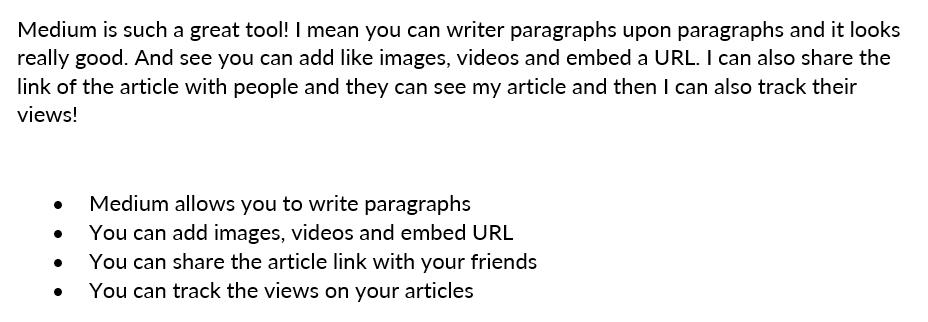
Why do you need a good resume?
Imagine this scenario — a Hiring Manager for a company opens/posts a new job for a Data Analyst role. To her/his surprise, in a couple of days, the inbox of this manager is flooded with hundreds of resumes. But, the requirement was only 50 candidates who would give a test, and then the manager would interview a couple of them. Now, the only way to manage these hundreds of applications is via Resume Shortlisting.
This scenario is repeated over and over for most Hiring Managers in India for almost all the jobs that they post/manage. And there’s the first reason why your resume matters. If your resume isn’t good enough then you are out of the hiring process in the first step itself.
So, does the resume only matter in the initial shortlisting? Nope, it’s equally important in all other stages of your job application as well. Every time an interviewer starts an interview with you, she/he has already gone through your resume and an overview of your performance (for the same job applications) until now. Your resume is the first impact you make on the interviewer. And pardon me for sounding cliché, but, the first impression is the last impression.
Coming to the point — How to make an excellent resume?
Before we jump into the point-by-point details of how to make an excellent resume let’s look at some common questions that pop up when you start making a resume –
- What template should I use? Should it be simple? Should it be flashy?
- Is a single-page resume good enough? Or am I allowed to have a multi-page resume?
- Do I need a single resume or do I need multiple versions?
Let’s answer these questions first –
- Your resume template choice reflects the kind of work/industry you want to enter into. Particularly, in the Indian context, a very flashy resume is not what the recruiters are looking for. Rather, recruiters expect a clean resume that displays your achievements and work at one place. Needless to say, if you are looking to enter creative roles like UI/UX, Video Editor, etc. then you definitely display your creativity in your resume too.
In short, a flashy resume might catch some recruiter’s attention for a while but what is going to matter is the content of the resume — so focus there! - As a college graduate/professional with 1–2 years of experience, a single-page resume is more than enough to cover all your academic details, internships, projects, and extracurriculars. You might have numerous achievements that might not fit on a single page but prioritize and decide what needs to stay and what can be left out. Remember that recruiters have to go through a pile of resumes and a very long resume is not going to make them happy.
- Try and have multiple versions of your resume. Create the versions based on the profile/company you are applying for. In most cases, the same resume you have can work, but you can put in a little more effort to customize your resume according to the job/company you are applying to. For example, if you are applying for a supply chain role at an FMCG company, then moving your FMCG-related projects to the top of the resume might get you noticed.
Important Dos and Don’ts for your resume
- Don’t waste your time selecting a resume template. Focus more on the content and structure of the resume. If you have your content ready then you can fit that in any template you want. So quickly select a template and just start!
- Don’t include details like – Father’s Name, Mother’s Name, Date of Birth, etc. in your resume. These details are not needed! Here is a list of compulsory and optional basic details to include in your resume –
1. Name
2. Email ID and Phone Number (so that the recruiter can reach out to you)
3. Address (Optional, just the city name, state, and Pincode should be sufficient)
4. Languages you speak (Optional)
Try to use minimum space for optional basic details so that you have enough space to cover the important parts of the resume. - Position your name on the top center of the resume or in the top left corner.
- Adding your profile picture to the resume is not necessary, but if you are adding one then make sure that it’s a professional photo of yours (remember it’s your resume, not Instagram!)
Sections in your resume and what order to follow?
Here’s a list of sections that you can include in your resume. This is not an exhaustive list but covers most of it –
- Academic qualification — This section covers your current degree, 10th, 12th grade/percentage. This section can be made tabular to save space for the other sections on your resume.
- (Full-Time) Work Experience, Internships, and Projects — This section covers your full-time work ex and internship and projects you have done during or after college.
- Positions of Responsibility—Have you been a school captain? Have you headed the debate team during college? Have you managed a college fest? If the answer to any of these is yes, then that goes in this section.
- Competitions, Certifications, Awards — Right from the science fair that you won at school to the paper presentation that you crushed at college, all of that goes here under this section.
- Skills — This section is supposed to outline or summarise your list of skills. For example — Microsoft Excel, SQL, Pandas, Adobe XD, Management, Communication Skills, etc.
- Extra-Curricular Activities — Your football victories, the social work that you did as a part of NSS, and the languages that you learned on Duolingo can be covered in this section.
There are a lot of other headings under which students/professionals cover their work, for example — patents, scholarships, conferences, etc.
The order of these sections also plays a role in the impact that your resume creates. If you are applying for the position of a Research Assistant then the section that contains your patents, and publications is more important than the other sections in your resume and hence should be the top section in your resume. For final year students/recent graduates, if you are not sure about the order to follow then you can have the academic qualifications section on the top, followed by internship projects, and then the rest.
Paragraphs vs Resume Bullet Points
Let me quickly cover this section in just one image –

When written using paragraphs the information seems a lot to take in at one go but using bullet points it can be broken into crisp lines that give you the summary easily. So, use bullet points in your resume rather than using paragraphs.
The way in which you write the bullet point also matters. So here are some bullet points on how to write resume bullet points (see what I did there?😅)
- Start the resume bullet point with an action word — Analyzed, Managed, Contributed, Spearheaded, Coordinated etc. See that you dont repeat the same action word more than 3–4 times. If you’re running out of words, then just google action verbs for resume!
- Don’t add too many bullet points for one particular thing. For example don’t add a project with 10 bullet points. This will use up a lot of space and will end up becoming no better than a paragprah.
- Follow a proper structure in your bullet points –
– [Action Word][What did your do or learn?][What was the impact?]
– Example —Implemented the idea of Palletizer and AGV which reduced 300 person hours per day in the factory - Keep the text of the bullet points ‘Justified’ or fill the lines till the end. Again, let me explain this through the image below –

- Limit the bullet point to one line and don’t let it run to the next line with just a couple of words. Resume with odd ‘white-spaces’ looks bad.
Final notes
- Once you have created the first draft of your resume, proof read it a couple of times. Ensure that there are no spelling errors, grammatical mistakes in your resume.
- If you’ve added hyperlinks in your resume, say you’ve added links to your design portfolio, then see that the links work properly (after your resume is ready in the pdf format).
- Send your resume to your seniors/batchmates/connections who work in the same company/job where you are going to apply and ask for their opinion on your resume.
- Always send your resume to recruiters in pdf format (sometimes students end up sending their resume in the word format).
After A LOT of help from my seniors and batchmates, here’s how my resume looked like in the final year of college
All the best for your job hunt!








